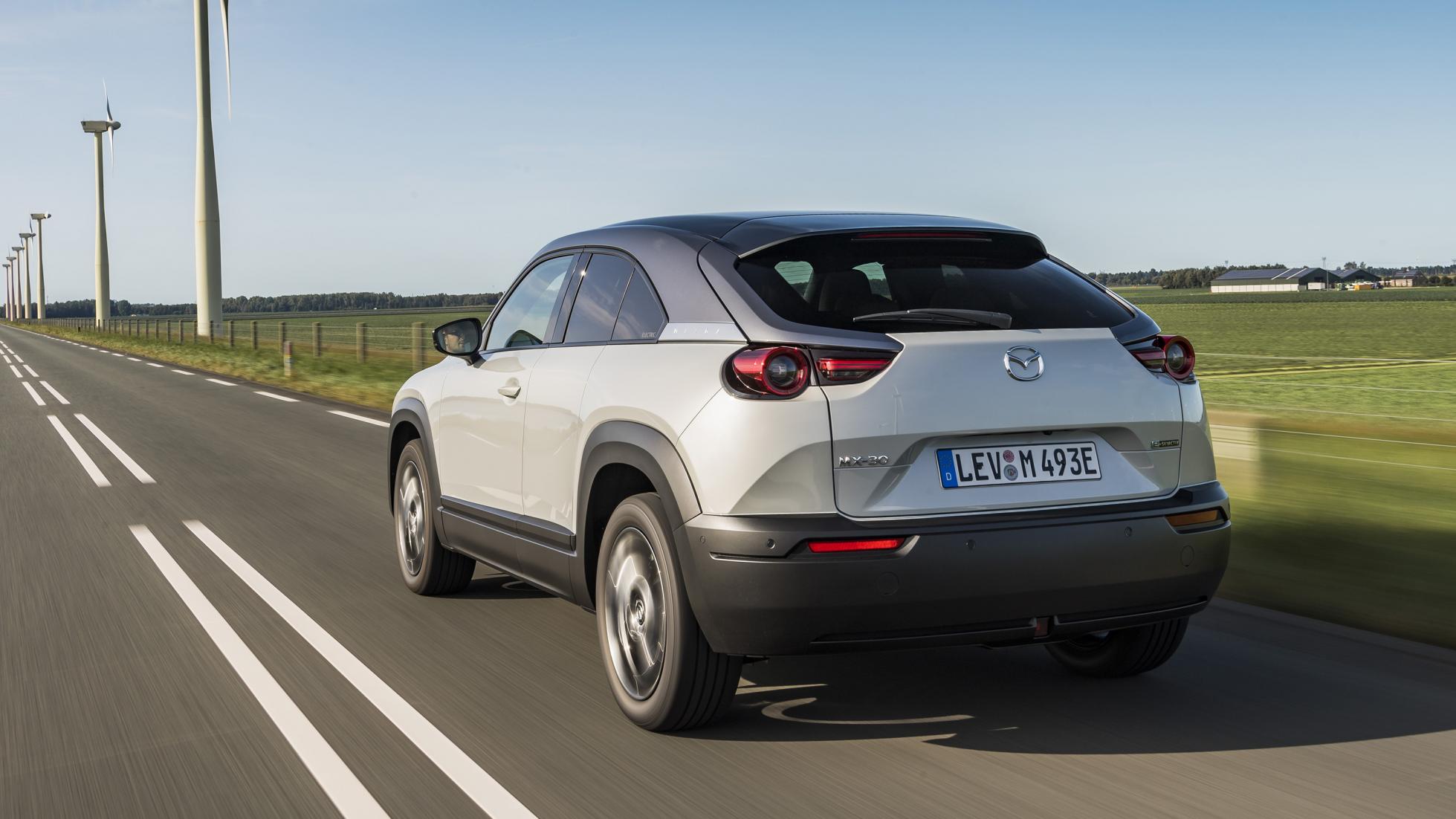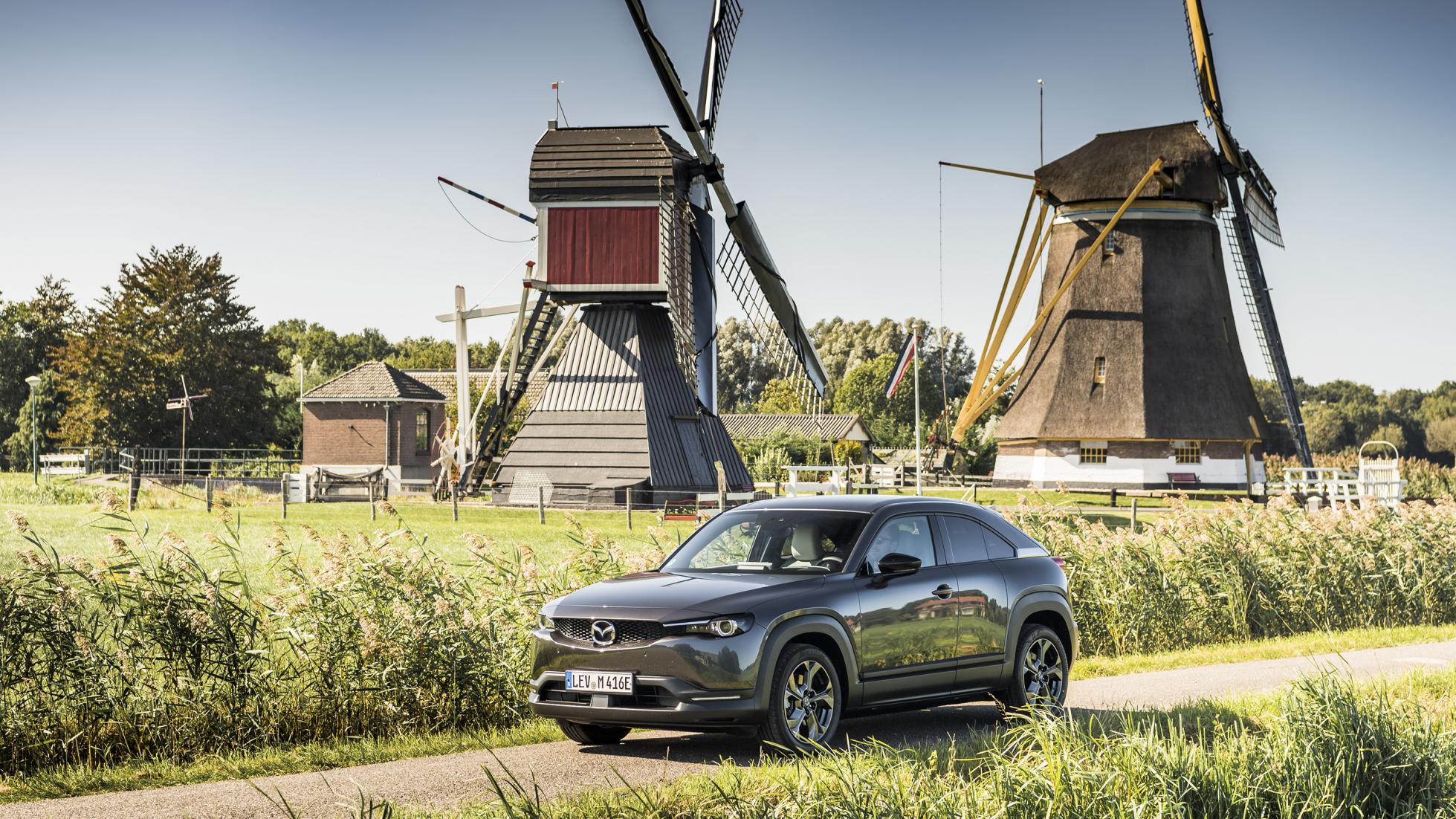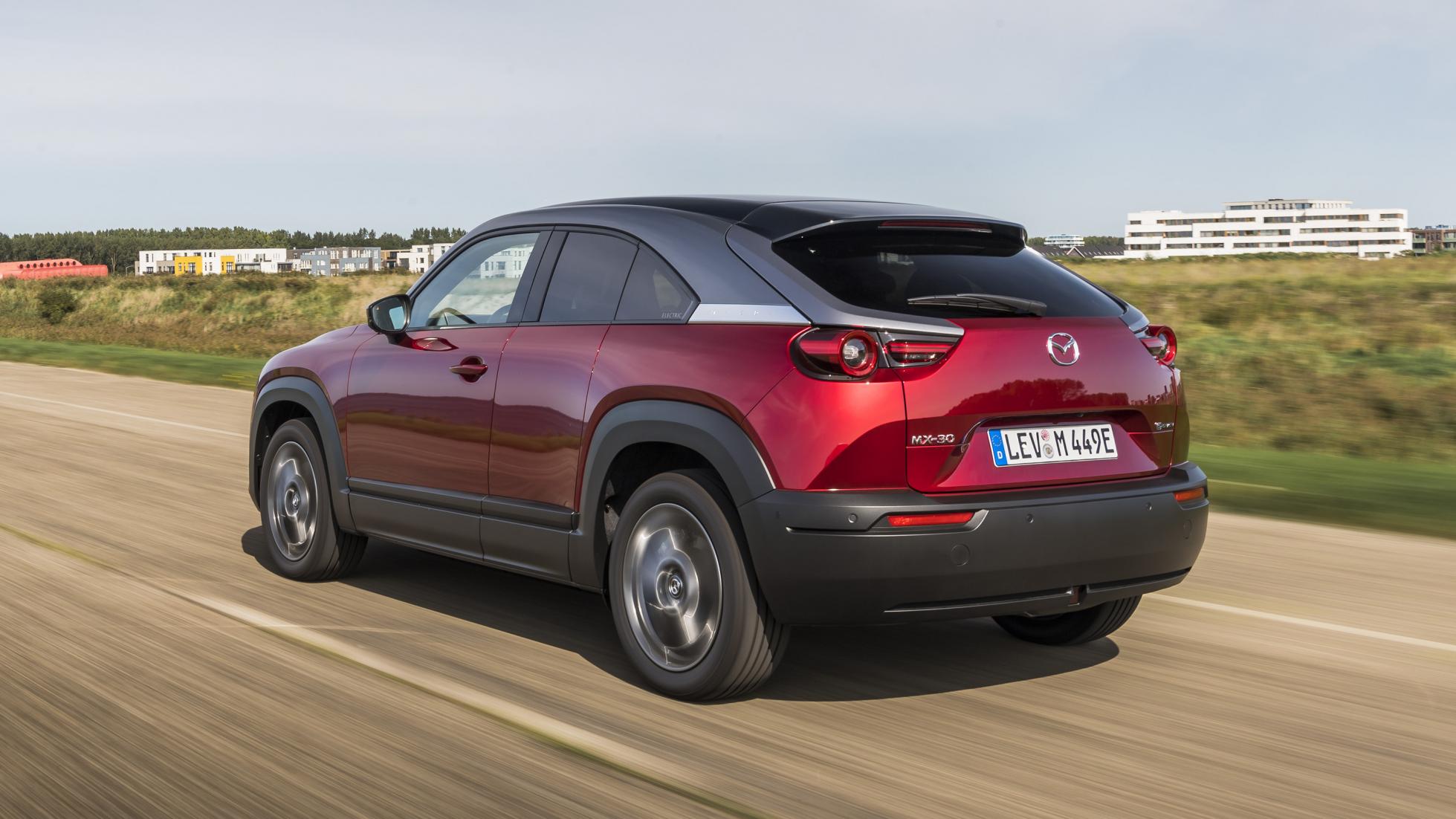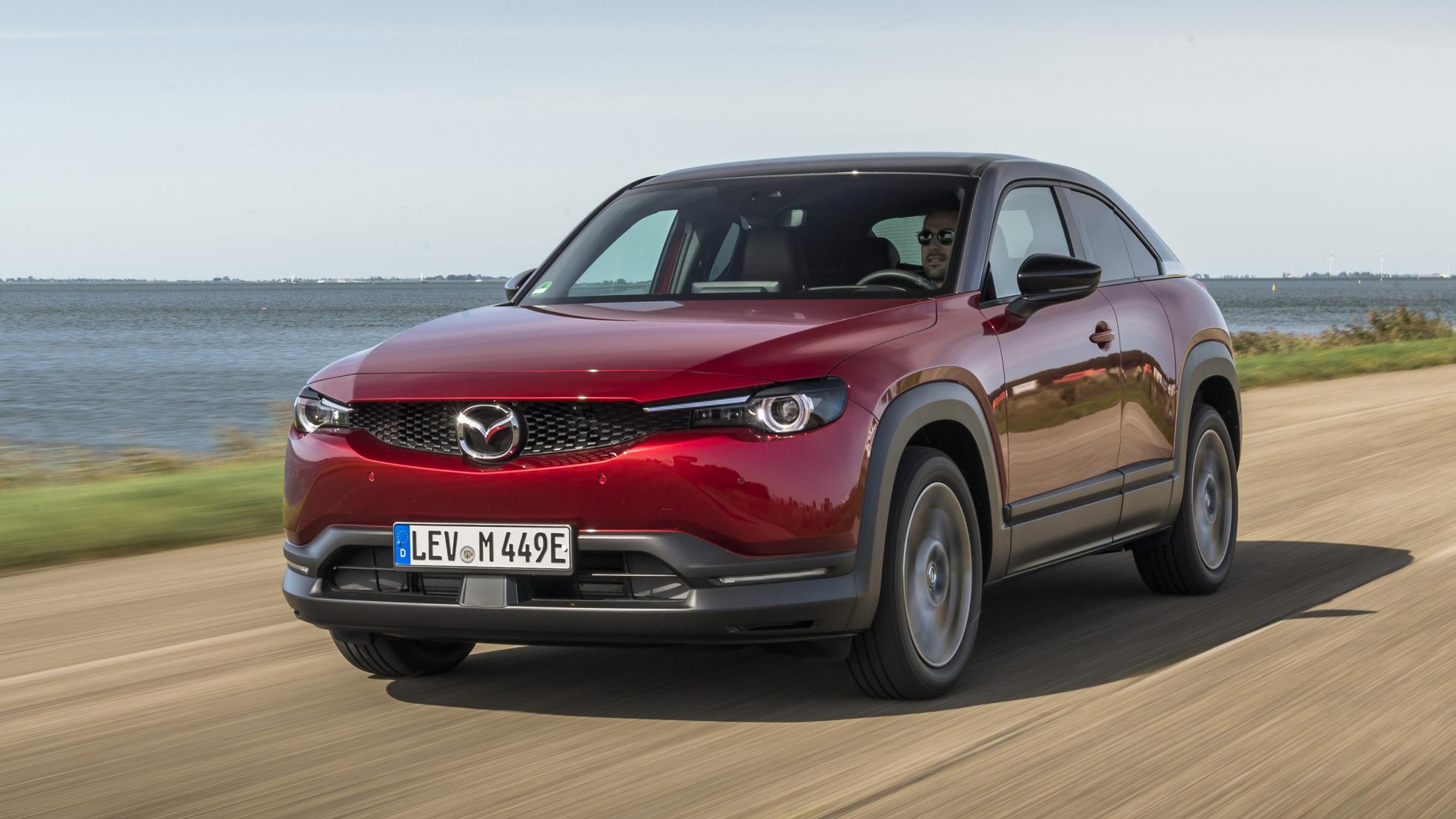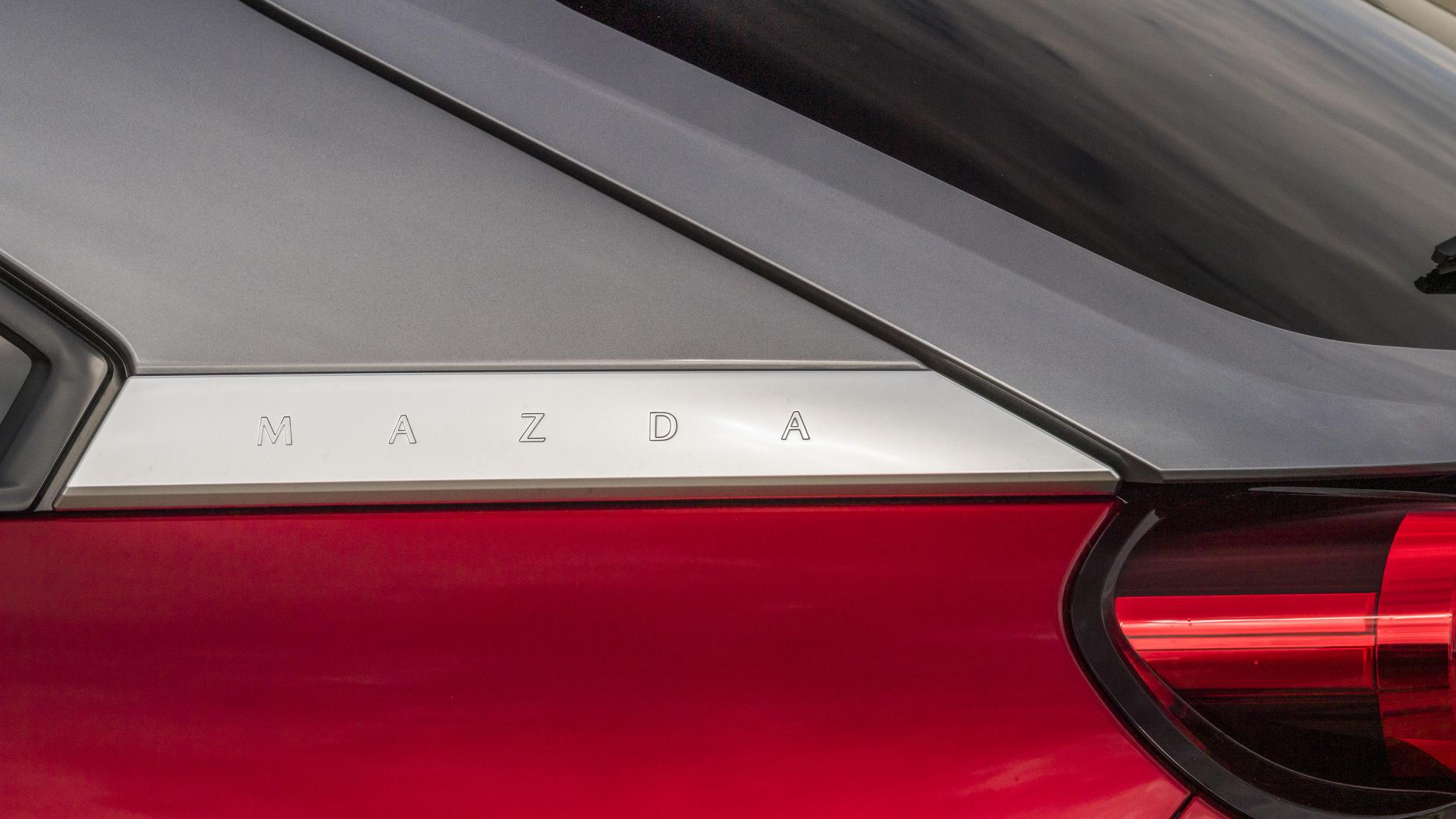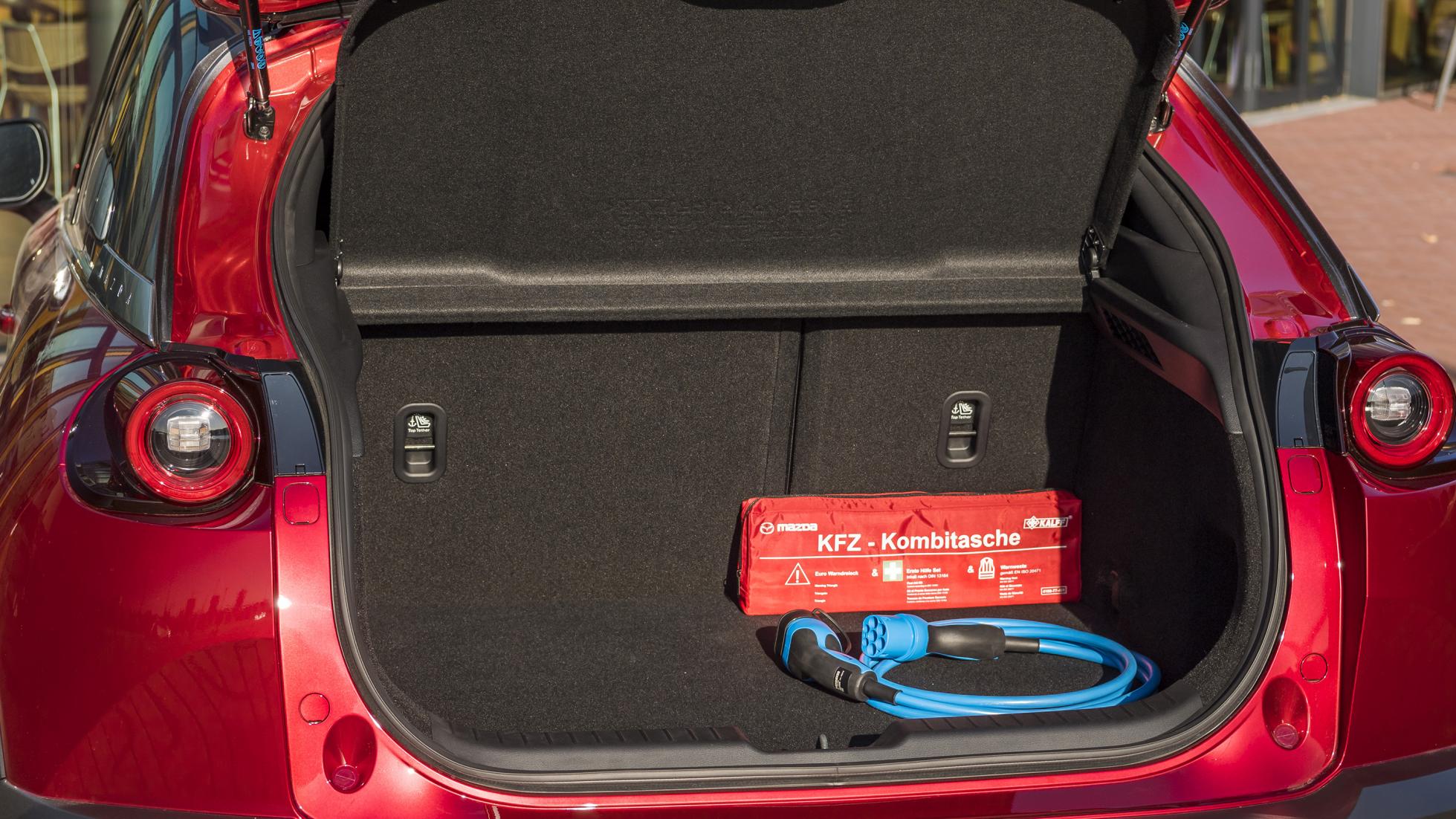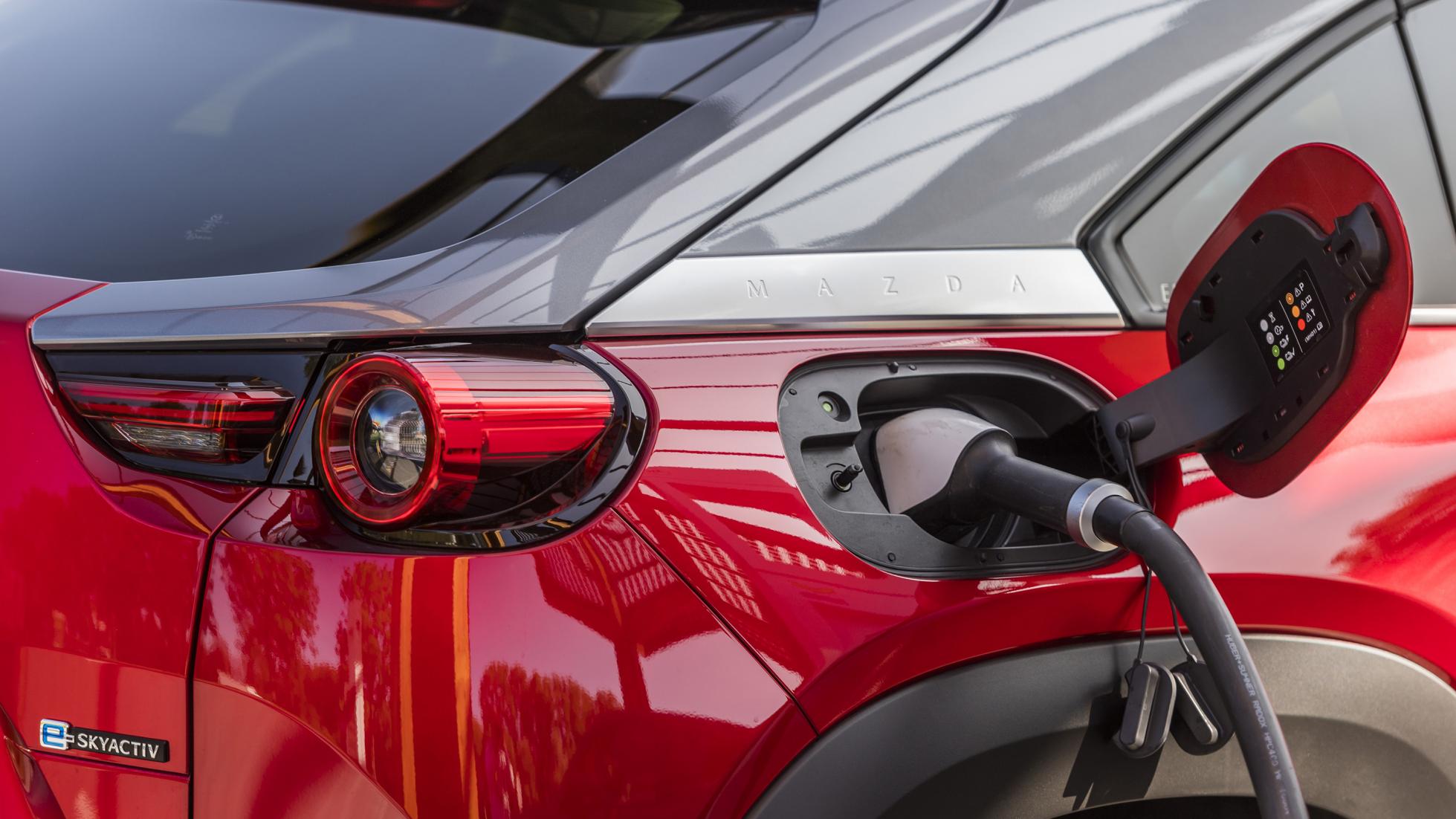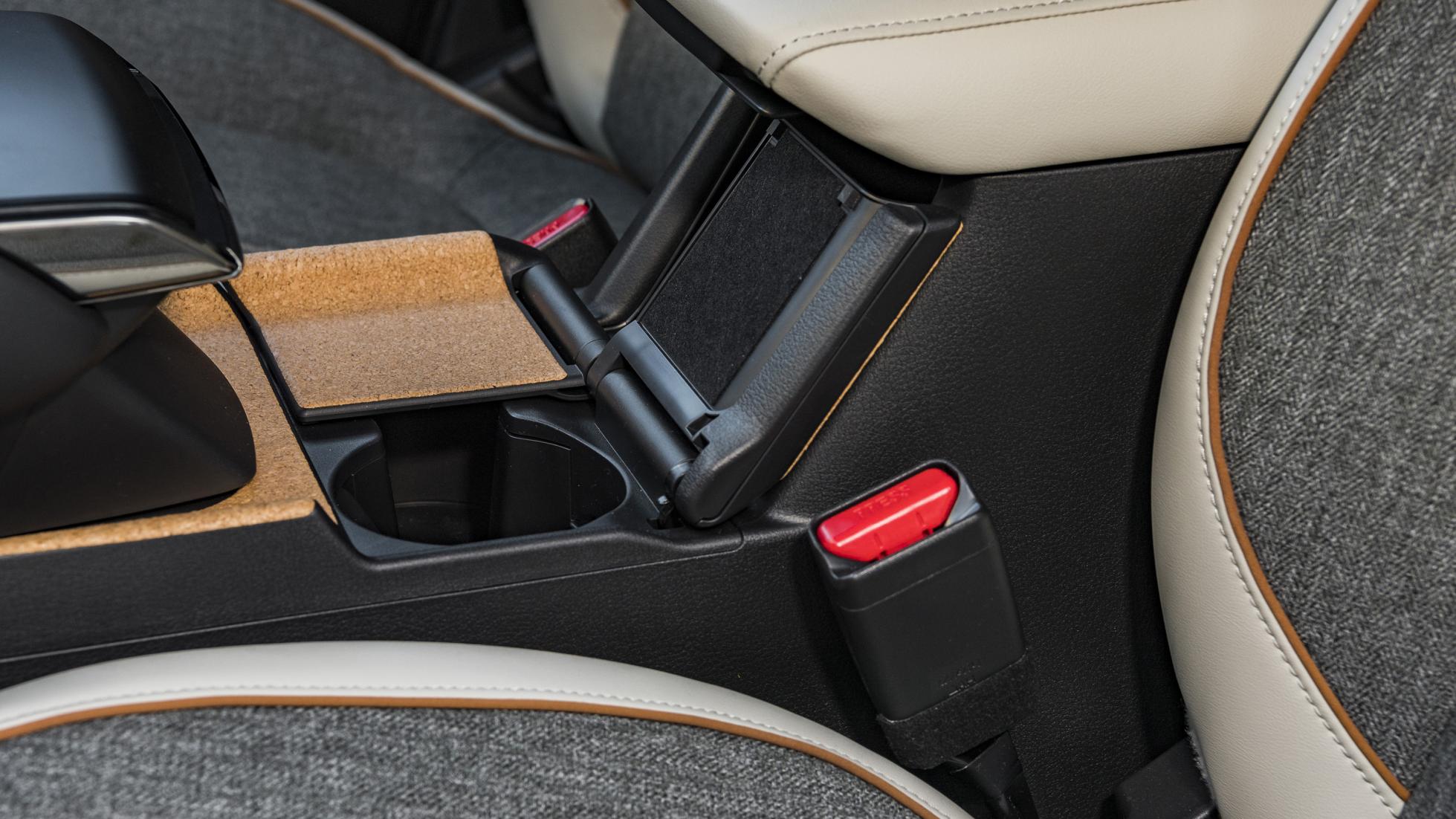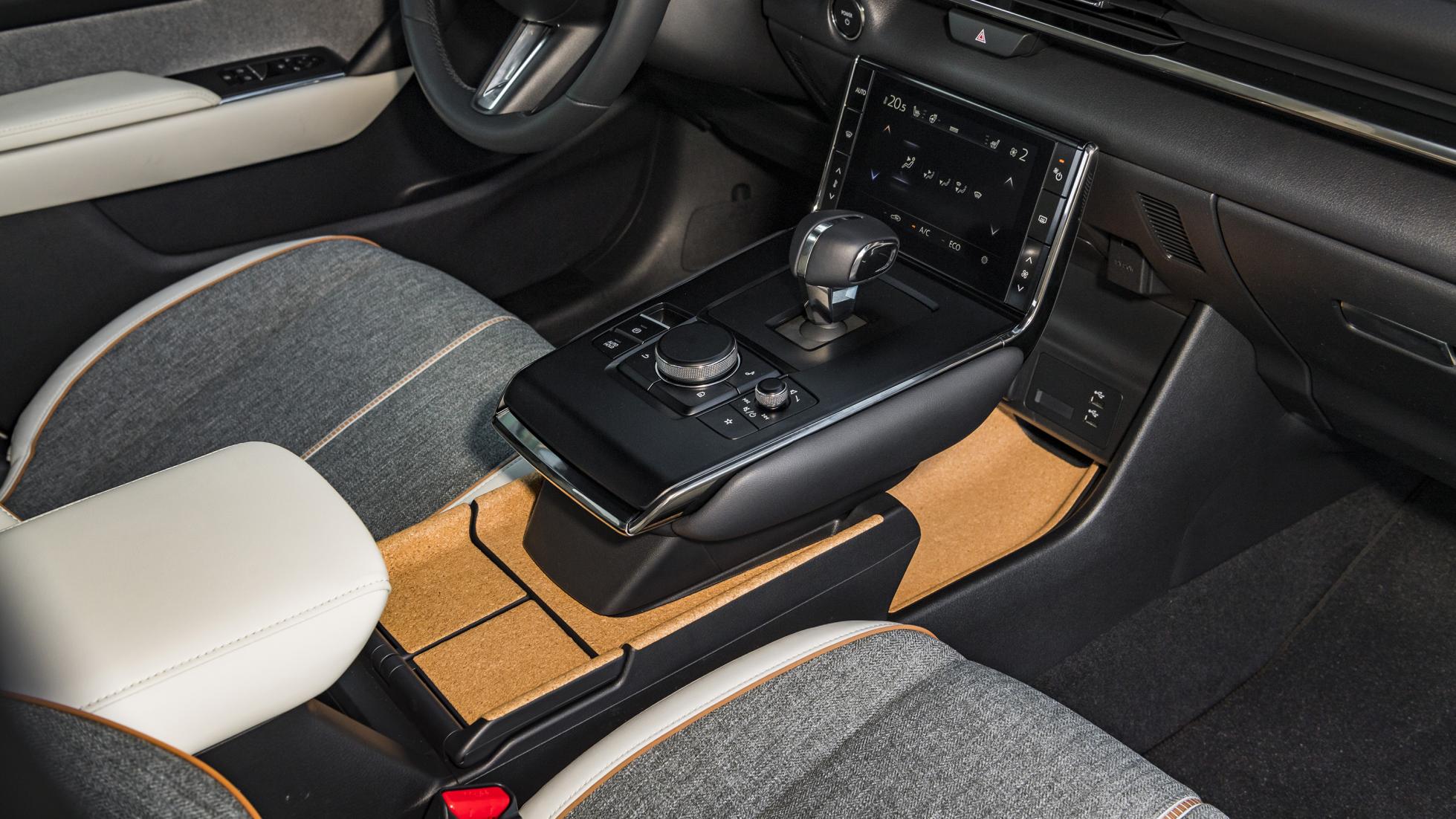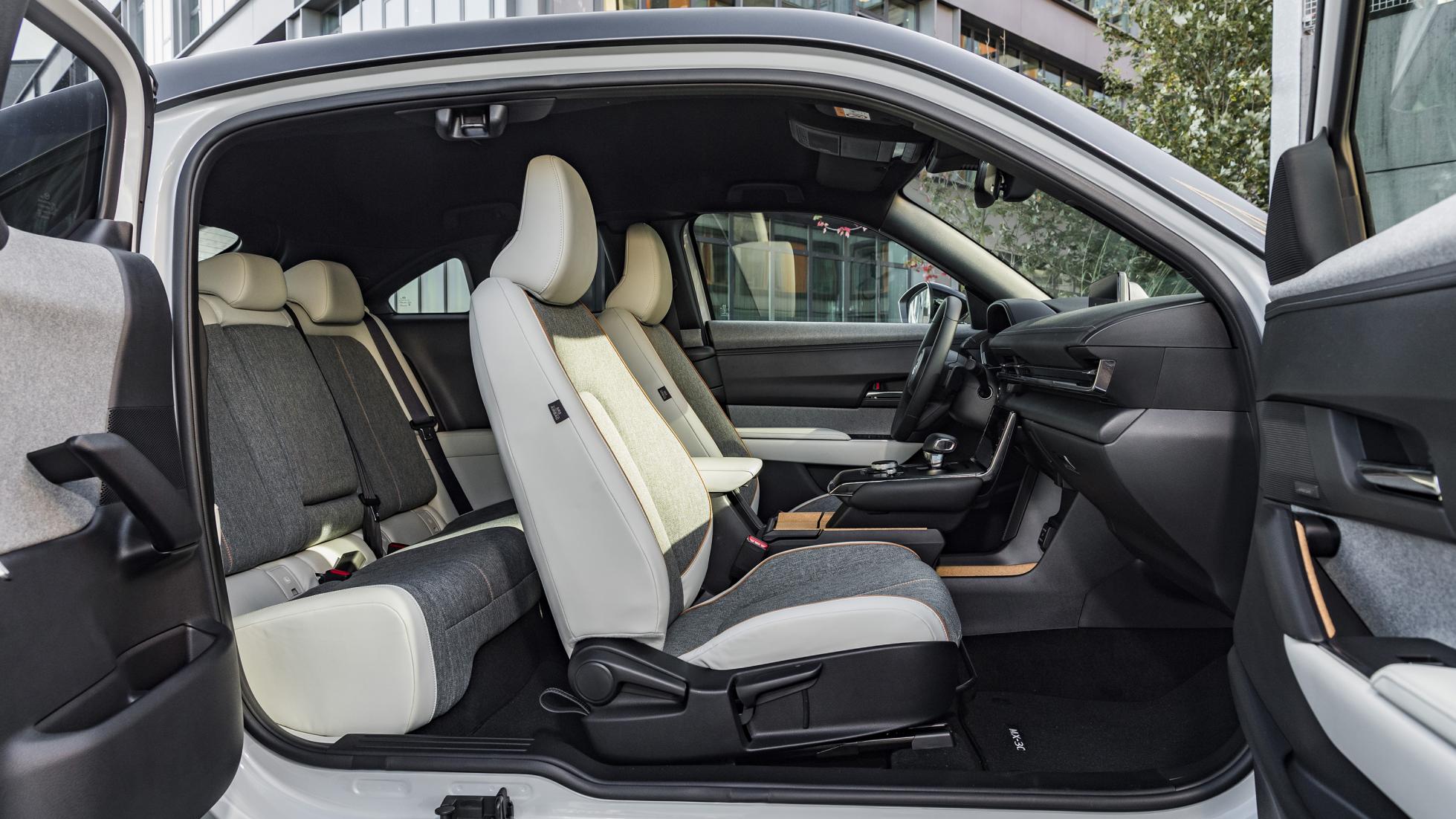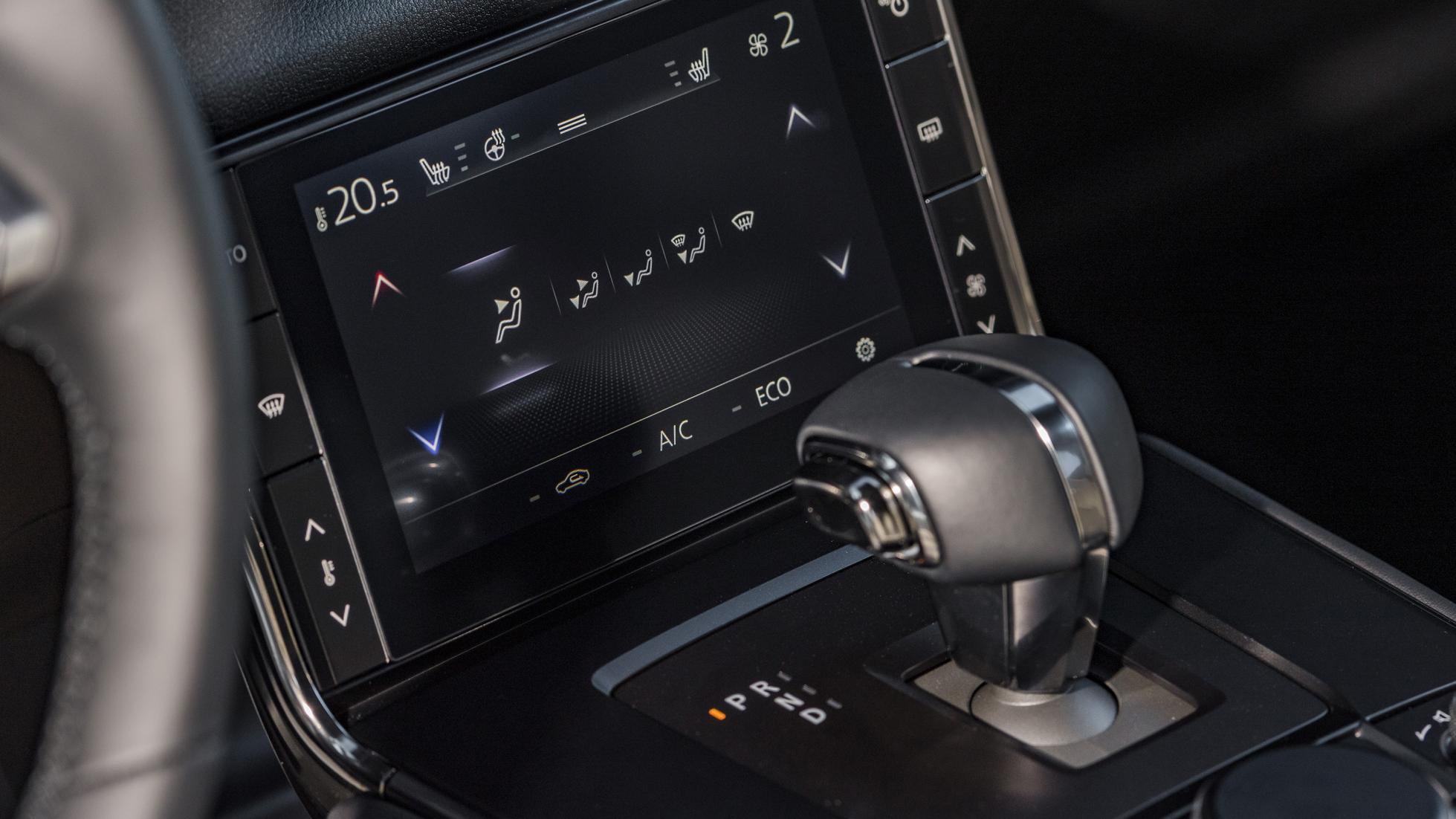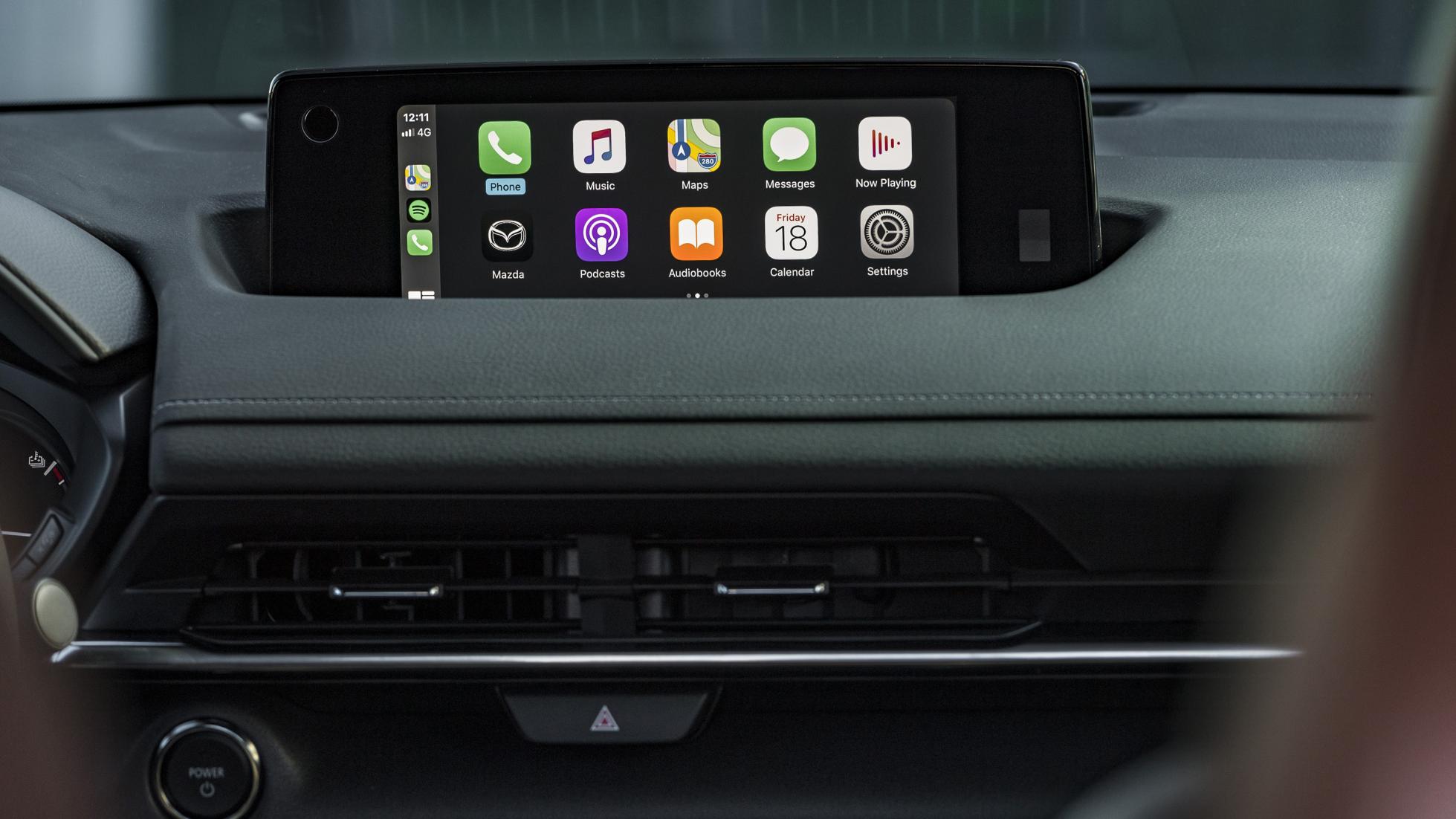OVERVIEW - What is it?
This isn’t Mazda’s first electric vehicle per se – it’s made several prototypes, including the absurd, Kinder-Egg-on-wheels EX-005 concept of 1970 – but it is Mazda’s first production EV.
Careering straight down the plug-in crossover route seems like a safe bet for pulling in buyers, but there are plentiful clues Mazda’s doing things differently. The name, for starters: MX is usually the prefix of coupes and roadsters, most notably the MX-5, so affixing it here (in lieu of more explicit EV badging) draws a real line in the sand that we should think of this as sporty.
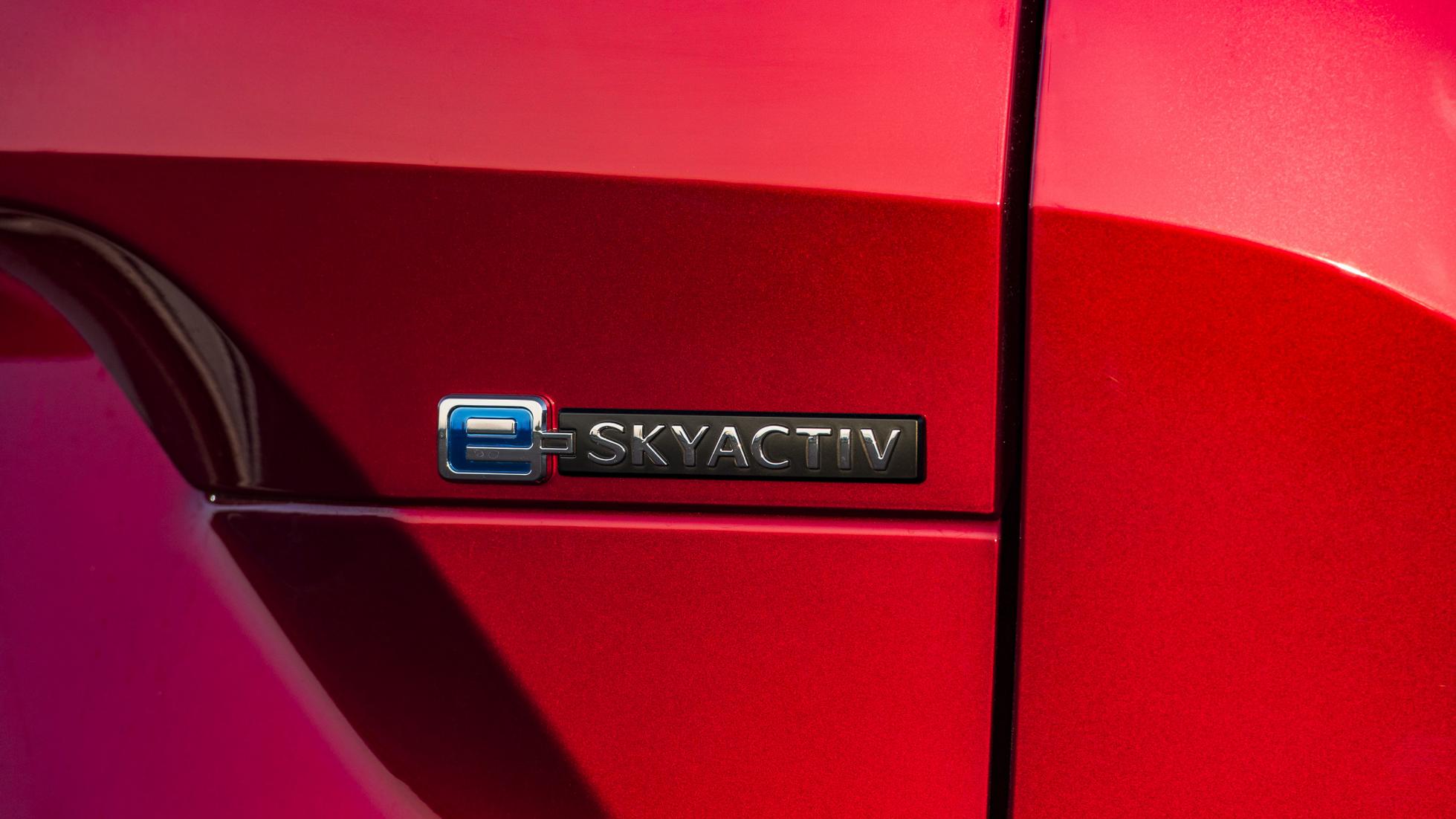
Then there’s its ‘freestyle door’ layout, which apes the RX-8 coupe of the mid-2000s. An odd choice, you might suggest, given that car’s unfashionable thirst for fuel and oil, but much like the retro styling of the Honda e, it’s an immediate talking point whenever somebody stops to poke around your MX-30.
In fact, the dinky Honda is arguably this car’s closest rival. Their prices align quite neatly, as do their range figures, Mazda claiming 124 miles - 200km - on the WLTP cycle. Or a smidge more if you predominantly drive in town.
Only 124? Yup. Mazda’s done the sums and worked out that smaller batteries have a significantly friendlier CO2 emissions footprint over their lifetime than larger batteries, and ‘break even’ with an internal combustion engine – i.e. counterbalance the high CO2 output of their manufacture with their lack of tailpipe emissions – after far fewer miles. It’s also researched its target buyers and concluded they don’t need any more distance from a full charge.
So, we’re told there’ll never be a bigger battery than the 35.5kWh item the MX-30 launches with. Instead, larger range figures will be yielded by the addition of a rotary range-extender unit, the constant rpm needed for the job ensuring it’ll be a heck of a lot lighter on fuel than Mazda’s last rotary-powered car, that voracious RX-8.
This is a five-seater, but the rear is probably best reserved for little ‘uns, while the interior itself keeps it firmly in Honda e hunting ground. While not quite as revolutionary in its layout, its mix of vegan seat materials, plastics made from recycled PET bottles and actual cork trim give it a firm hipster-brunch-spot vibe.
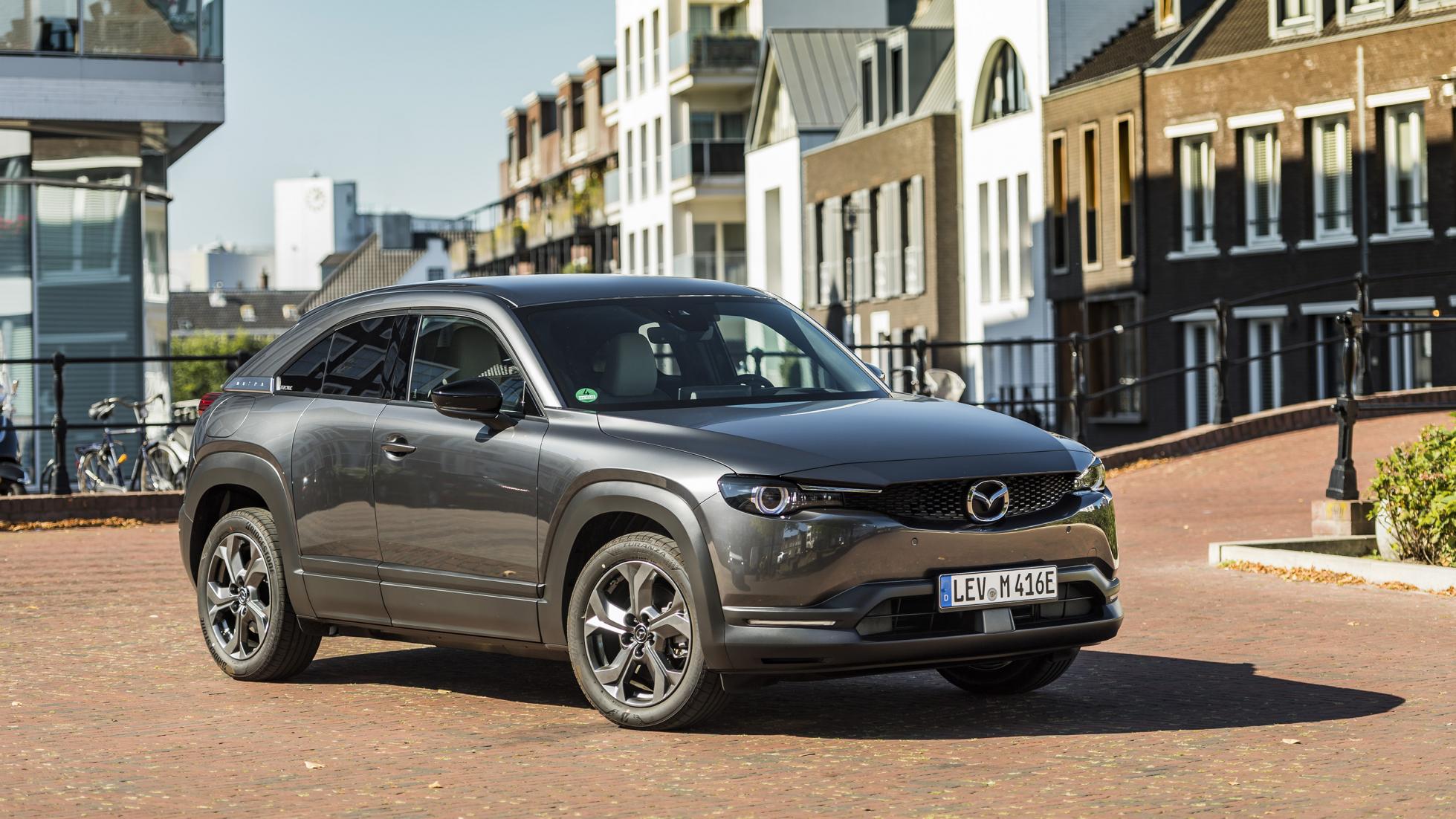
DRIVING - What is it like on the road?
Mazdas are usually among the sweetest driving cars in their class owing to a combination of supple ride, light weight and a lovely manual gearshift. The MX-30, with its low-slung 310kg battery, its 1,645kg kerb weight and its single-speed transmission, can’t offer those selling points. It is, somewhat inevitably, lacking the sparkle that emanates from something like a Mazda 3 or CX-3.
It’s still a decent thing to drive, mind, and Mazda’s fitted the same torque-vectoring tech used elsewhere in its range but given it a bit of pep to work with the electric motor on the front axle. The result is neat, tidy, fuss-free cornering, and an amusing chirrup of wheelspin if you’re especially enthusiastic out of a corner. It’s not fun like an MX-5 is, but in the slightly homogenised world of EV handling, it’s one of the neater cars on offer.
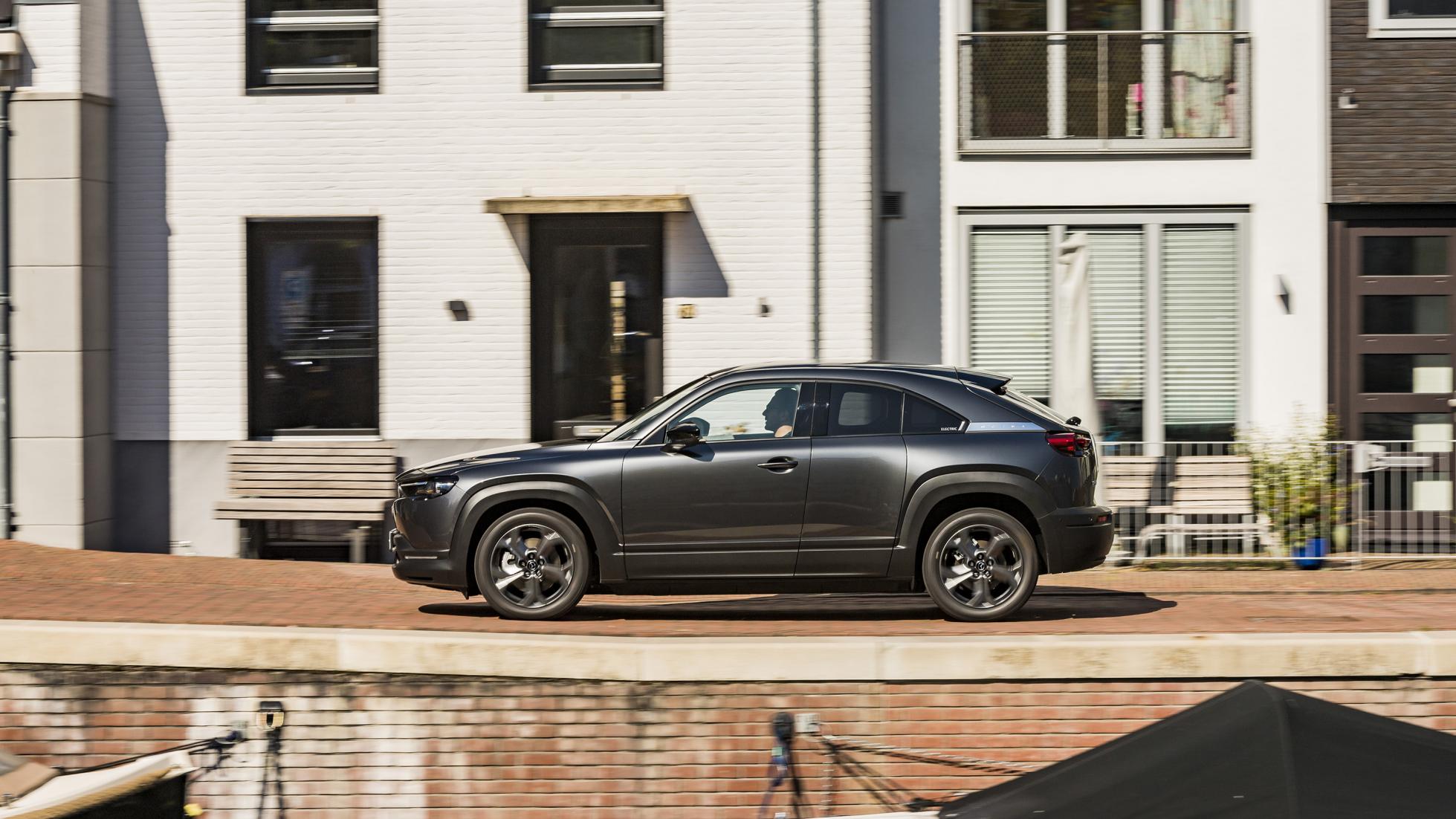
But you pay for it in ride quality, or lack thereof at low speed; there’s little subtlety to the way it deals with speed bumps. It’s hardly alone in this regard, however, and it’s only really the Honda e that’s managed to fully evade the skateboard-like rigidity that small cars with a bank of batteries in their belly usually exhibit.
Performance is fairly sober – with 143bhp moving 1.6 tonnes, its 9.7sec 0-100kph time and 140kph top speed are to be expected, but at least they’ll stop you sapping the battery too briskly. And as always in an EV, it’s 0-40mph where it majors anyway. There’s more than enough instant go to keep you happy at urban speeds.
There’s also smart brake regen on offer, with five levels to choose from via a pair of steering wheel paddles. Set at its strongest, this becomes a one-pedal car for all but reaching a standstill. It’s way more intuitively set up than some rivals, too, so we’d wager you might actually use it as opposed to trying it once and reverting back to driving more conventionally.
One thing you can’t alter is the false engine noise that accompanies acceleration and braking. But it actually sounds quite sweet – like a dinky three-cylinder petrol engine singing through autotune – and only pipes up under harder throttle or brake use. The car’s as spookily serene as any other EV as you cruise through town or along an A-road.

ON THE INSIDE - Layout, finish and space
Mazda’s played things very well in here. Vegan materials and cork-covered cupholders may scream modern (though Mazda marks 100 years in business in 2020, and it started out making cork…) but all the major controls have been kept safe and approachable.
The MX-30’s engineers have seen everyone else mess with the gear selector formula and taken a chance to fit something that physically clicks between Park, Reverse, Neutral and Drive, reassuring any first-time EV drivers right from the off that the brave new world doesn’t actually require much bravery. Another reassuring touch is its traditional, analogue fuel level gauge displaying how much battery’s left. No hard-to-fathom digital nonsense here.
Mind, every MX-30 gets a head-up display and a pair of 7in screens as standard, one up top to display media, nav or your smart phone interface, the other down by the gear lever for the climate control. But – hurrah! – the latter’s lined with physical buttons as well as a touchscreen, though we’d argue the fact it only displays climate, and doesn’t cycle between other functions, is a missed opportunity given how much room the screen takes up.
In the back, things will be a bit of a squeeze for adults, though manageable over short distances. Which, given the range figure, is probably fine. It’s worth having a poke around one of these before committing your kids to frequent journeys in the back, though – cool as those rear-hinged back doors are, they lead to pretty poor visibility for passengers owing to a pillar separating two tiny windows, hidden by the exterior tints.
The boot is reasonably sized but, thanks to the powertrain beneath, a tad shallow. Its 366-litre capacity puts it on par with a Ford Focus. Which the MX-30’s dimensions broadly match.
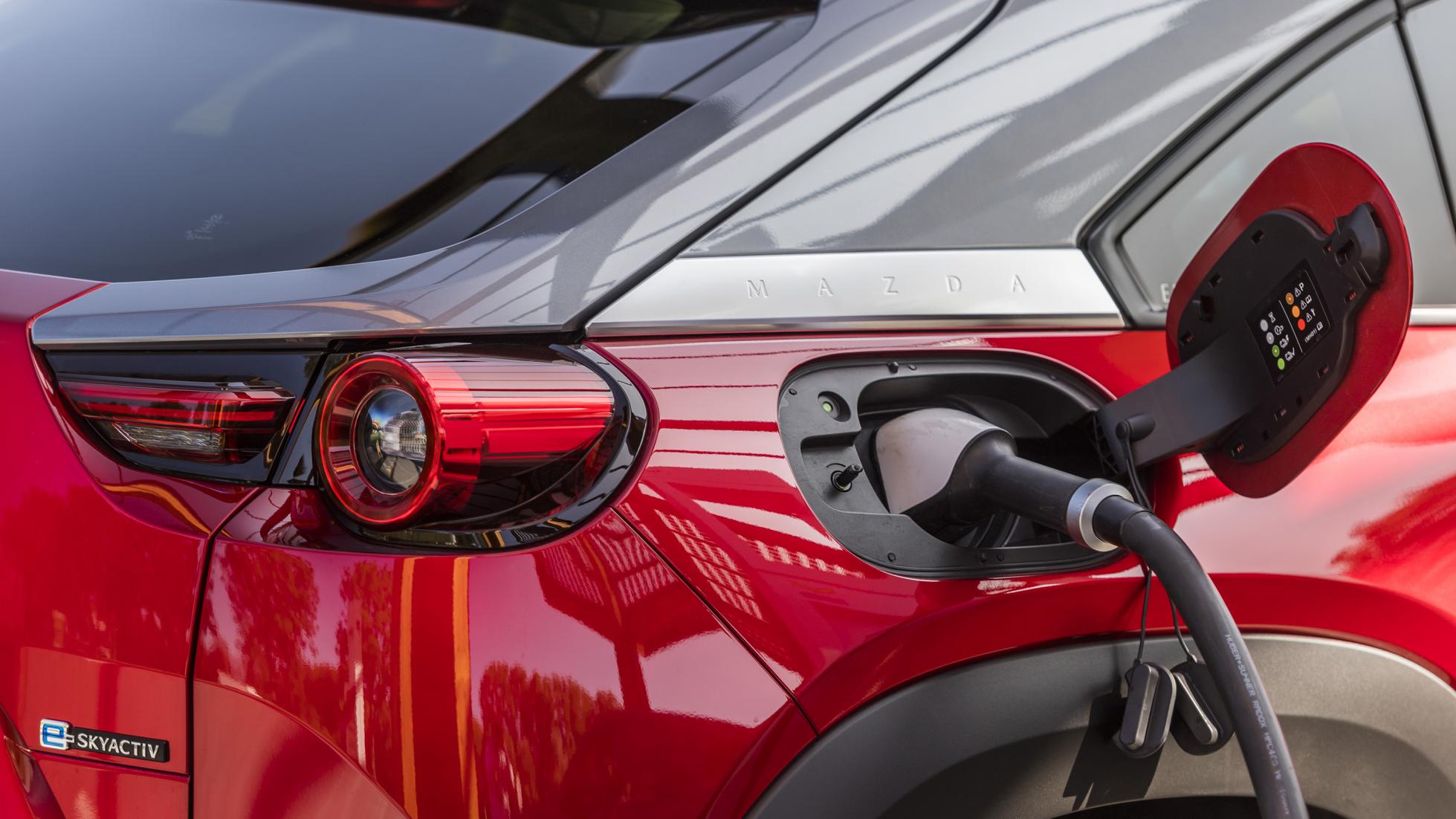
OWNING - Running costs and reliability
There are four levels of spec for the MX-30, each one equipped with radar cruise control, most of the active safety tech you’d want, a reversing camera and the biggest touchscreens Mazda offers. Prices start at £28,545 before any government grants, so you’re down to a smidge over £25,000 (as we write) with the handsomely equipped base spec car. Few electric cars are as cheap, and none bar an MG are shaped like an SUV.
It launches as the First Edition, limited to 500 units and essentially a greatest hits package of the options list for £30,495 (or £27,495 post-grant). It’s probably the one to have while it’s available. If you want a black roof – for what Mazda calls a ‘three-tone’ exterior – it’s an extra £950 with a grey body, or £1,250 alongside Mazda’s signature Soul Red.
As ever, there’s an app to help keep you on top of battery level and suchlike, while a 20 to 80 per cent charge takes just over 30 minutes with DC charging, or around three hours with AC.
In short, you’re buying into the slimmest fully charged range in its class, but getting some of the highest tech and equipment levels in return.
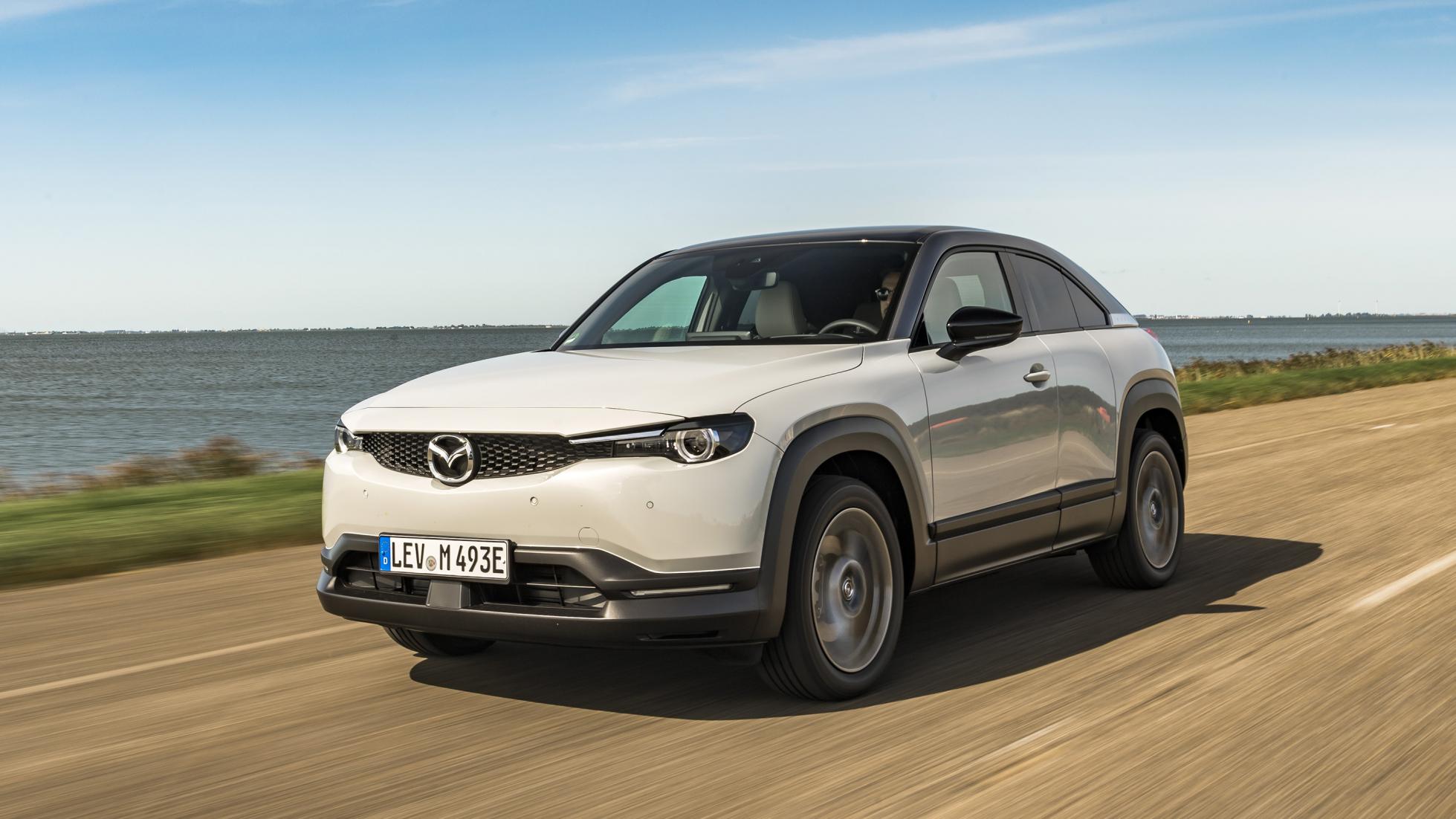
VERDICT
The dinky electric crossover is becoming a competitive corner of the car market. The MX-30 doesn’t quite offer the sportiness its name suggests: the nature of its powertrain stymies any chance of Mazda’s usual USPs – a deft touch and a delightful gearbox – giving it a head start over its key rivals.
But there’s a smart interior behind those wacky doors to make up for it, and it still drives as neatly as you could ever hope for from a 1.6-tonne SUV with modest power. Mazda’s been clever in how much regularity it’s built into the process of operating it, too. Analogue readouts and physical gear selection mean it’s a lot less daunting clambering in here than some competitors, going someway to counteract its poorer range figure. Let’s hope that doesn’t put people off a genuinely interesting take on the EV.
Words: Stephen Dobie
Another interesting EV, albeit one not quite as deft to drive as its name suggests
| FOR | AGAINST |
| Cool doors and interior allied with familiar controls | The range figure might put some people off |
| SCORE | 7/10 |

